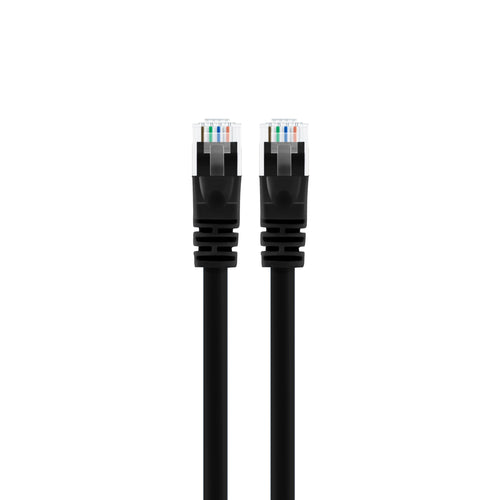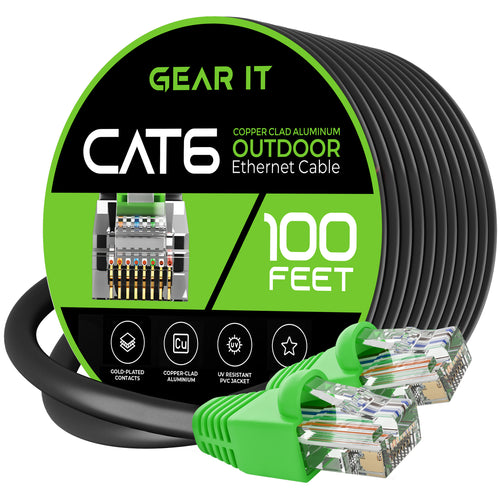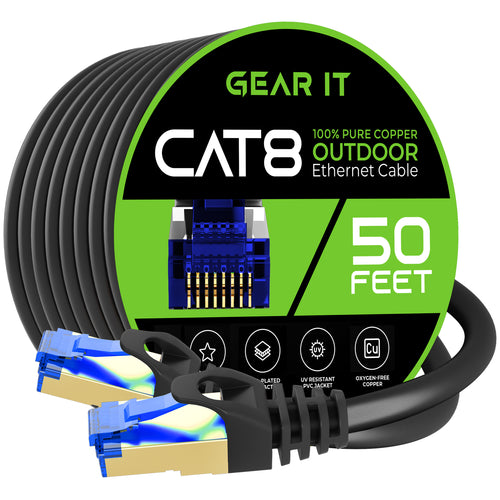Ethernet cables are central to establishing a successful LAN network, but there is a wide variety of cable options on the market. When building a new home, outfitting a new office space or setting up a connection for another organization, knowing which cable to choose makes a difference in connectivity and performance. Ethernet cables, such as the Cat5 or Cat5e, Cat6, Cat7 or Cat8, impact the ability to stream games or videos, back up or transfer files, and access cloud-based software.
An Overview of the Cat5e and Other Cable Options
Looking at all your cable options can get overwhelming. There are some older cables that are affordable and still functional, but you may need to upgrade to a Cat7 or Cat8 for maximum utility. Selecting the right cable means understanding the different features and capabilities among your options. It’s practically impossible to avoid using an Ethernet connection, no matter how sophisticated your network is.
The Ethernet cable connects your local area network and devices within the network to the internet. The cable can also hard-wire devices to the internet to avoid the lag and interference that often accompanies wireless connections. The differences in the Ethernet cables address network standards and connectivity speeds, giving you the best performance with the right choice.
The Cat5E Cable
The Category 5 network cable is known as a LAN or Ethernet cable. This cable is made of four twisted copper wires and an RJ-45 connector. You will find these Cat5 cables used in businesses or homes with older network configurations. The Cat5 was introduced back in 1995 and offered 10/100Mbps and 100MHz bandwidth. MBps refers to megabits per second, or the speed at which information is transmitted. Even though an older cable, it could transmit phone, data and video signals up to 328 feet without additional amplification.
The Cat5e is an upgraded version of the original. This upgrade allows for transmission speeds of 1 Gbps, a 100 Mhz frequency and amplification up to 328 feet. Gbps refers to gigabytes per second and is the transmission of billions of bits of data in a second. This newer cable reduces crosstalk between the wires and works to decrease transmission errors and potential interference. While it still works in many applications, this cable makes for complicated upgrades with modern technology.
The Cat6 Cable
The Category 6 Ethernet cable improves upon the Cat5e. This version uses four pairs of copper wired and improves connectivity to 10Gbps. With the right conditions, you can experience transmission speeds up to one Gbps at 100 meters. The transmission at 10Gbps depends on crosstalk interference but typically occurs between 37 to 55 meters. It can transmit at frequencies up to 250MHz.
One of the benefits of a Cat6 cable is the use of standard RJ-45 connectors and its compatibility with Cat5e versions. Although an affordable upgrade with 10 times the speed of its predecessor, this cable does cost more and typically comes in shorter lengths. The wires are wound more tightly to remove more interference and crosstalk, and the plastic core in the middle of the cable is credited with giving it better accuracy in obtaining signals.
The Cat7 Cable
The Category 7 cable works for a demanding gigabit infrastructure and delivers frequencies as high as 600MHz. If you are creating a smart home with multiple connected devices, this is an ideal option that provides speeds up to 10Gbps. It’s created with a completely shielded four-connection channel of either shielded foil or twisted pair cabling. These longer, shielded cables deliver improved noise immunity and eliminate almost all cross-talk while reaching faster speeds. As an added benefit, it’s backward compatible with the older Cat6 and Cat5e cables.
The Cat8 Cable
Trumping the other varieties in performance and speeds is the Category 8, which can support frequencies that reach up to 2GHz. This doubles the capabilities of the Cat7. It can also achieve speeds up to 25Gbps or 40 Gbps depending on the version of the Cat8 you use. Shorter distances produce higher transmission rates, and shielded wiring reduces interference. This is a sturdy, four-pair woven cable that has the highest performance out of the other Ethernet cables on the market. However, it is still backward compatible all the way to the Cat5e, thanks to the RJ-45 connectors.
Though it delivers impressive speeds, the Cat8 is not a good option for residential use. To get maximum efficiency, you need to have compatible network cards, routers and switches for this configuration. It’s best left for commercial use.
Tips for Choosing the Right Ethernet Cable
Once you understand the basic differences between the cables, you can make an informed decision for your needs. For most residential settings, including those with a home office, the Cat5e cable is the lowest selection you should use. You can also use this cable if you have a small office with less than 10 connected devices.
Small to medium-sized businesses where there are a dozen computer users should never use lower than a Cat6 cable. This is an affordable option that can still give you enough bandwidth to handle your daily network traffic at acceptable speeds. These only perform well with shorter cable lengths, which is something to consider when evaluating your office space and the locations of connected devices.
If you require superior performance with a 25G or 40G network, you should select a Cat7 or Cat8 cable. These are more expensive, but you will only achieve higher durability, faster speeds and lower interference rates with these cables. The Cat8 is more expensive but delivers exceptional results with improved productivity. You can achieve 600MHz performance with a Cat7 while the Cat8 will deliver up to 2000MHz. The Cat7 reaches 10Gbps at a cable length of 100 meters, while the Cat8 delivers 25 to 40 GPBS at 30 meters.
Purchase Quality Cat5e, Cat6, Cat7 or Cat8 Networking Cables
Whether you need a Cat5e setup for your home office or have a more elaborate networking need, shop the selection at GearIT. We carry options in a range of sizes with added weather protection, a lifetime warranty and great prices. Order your cable today.



























